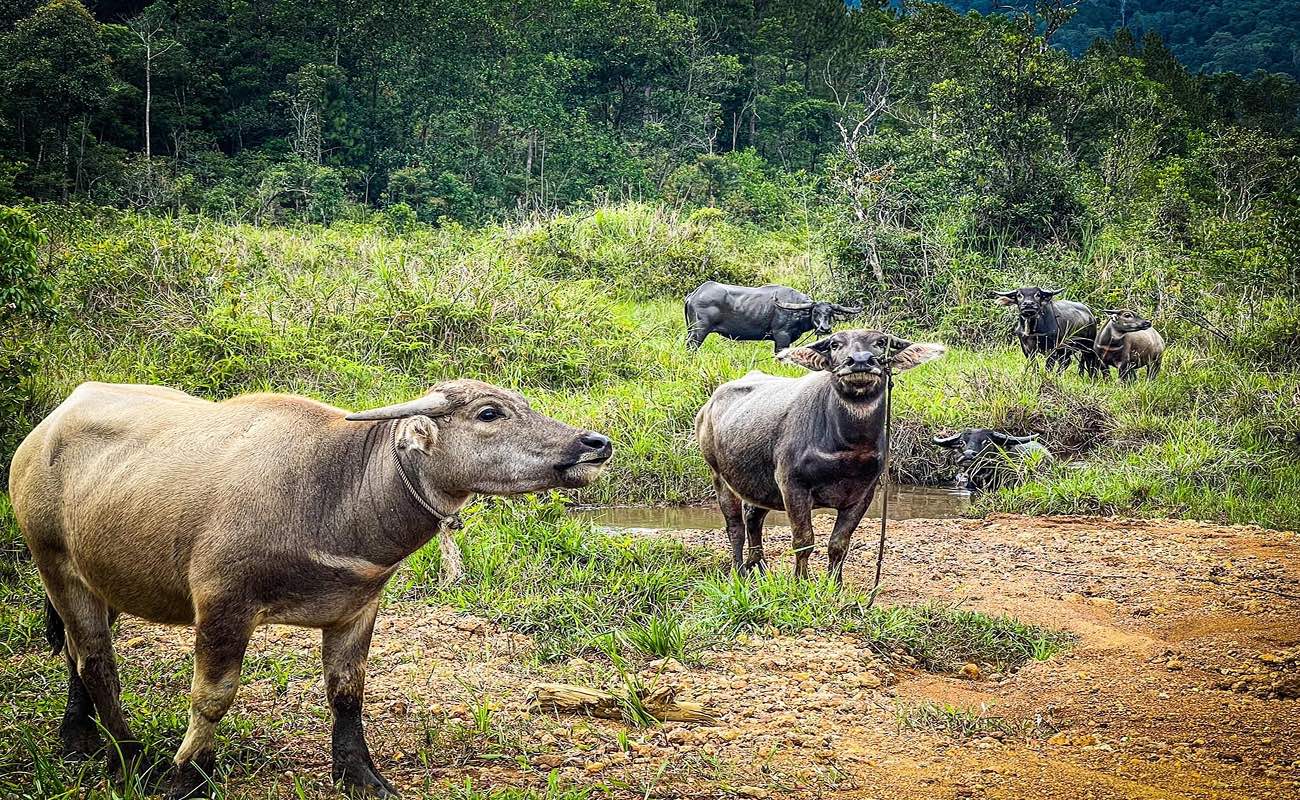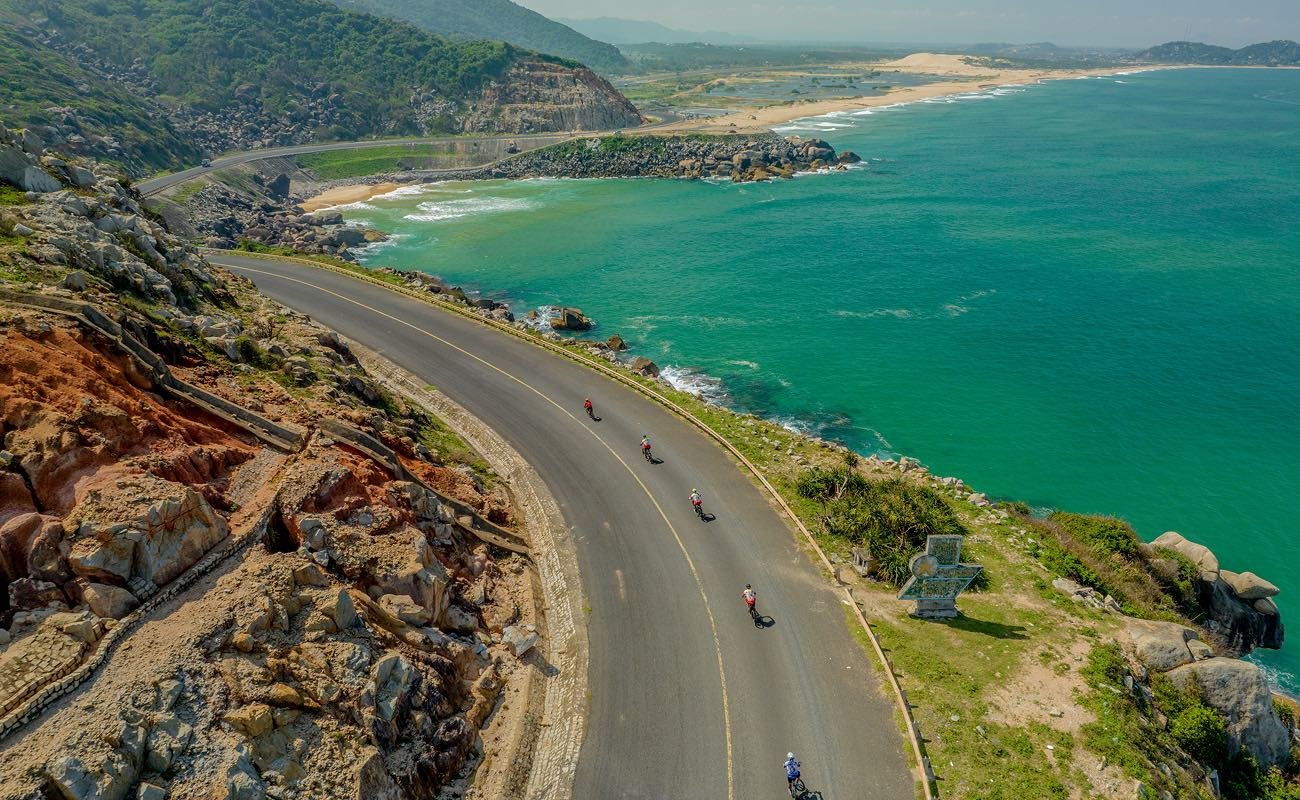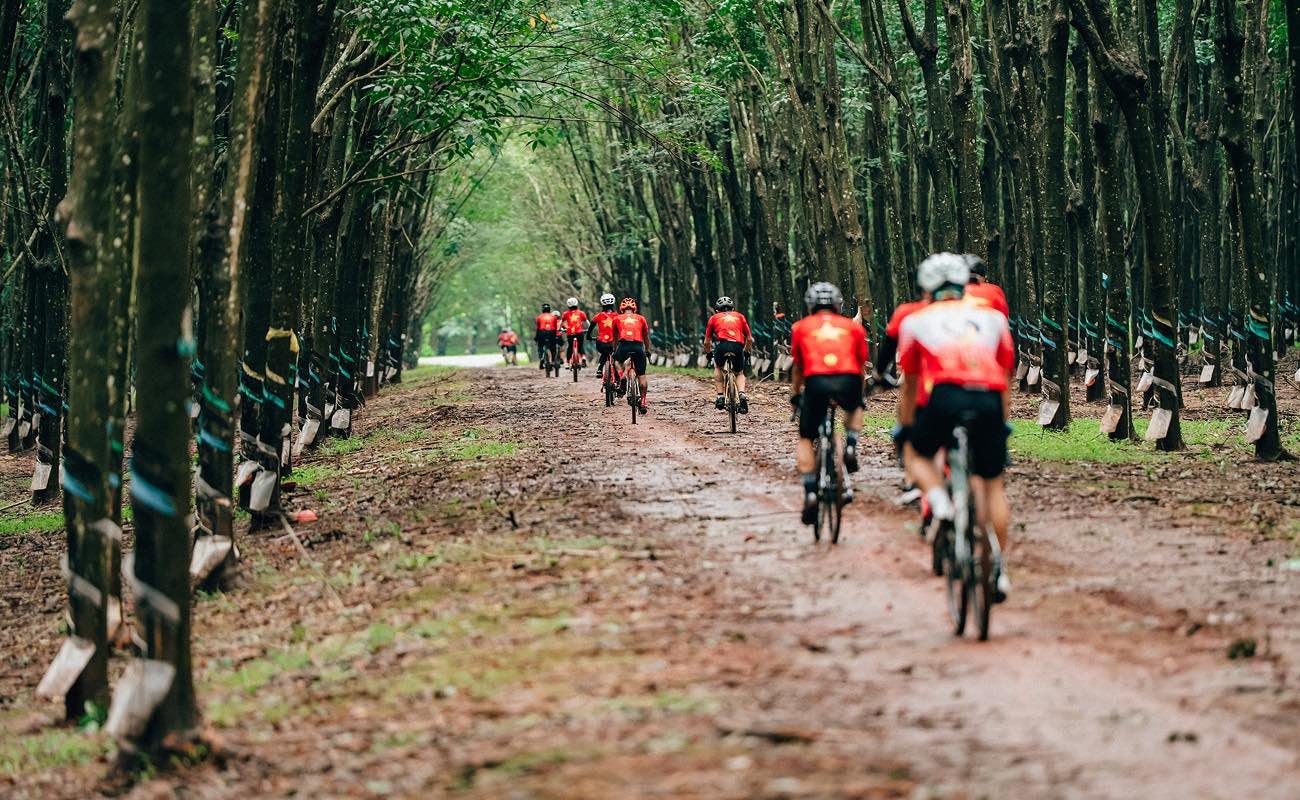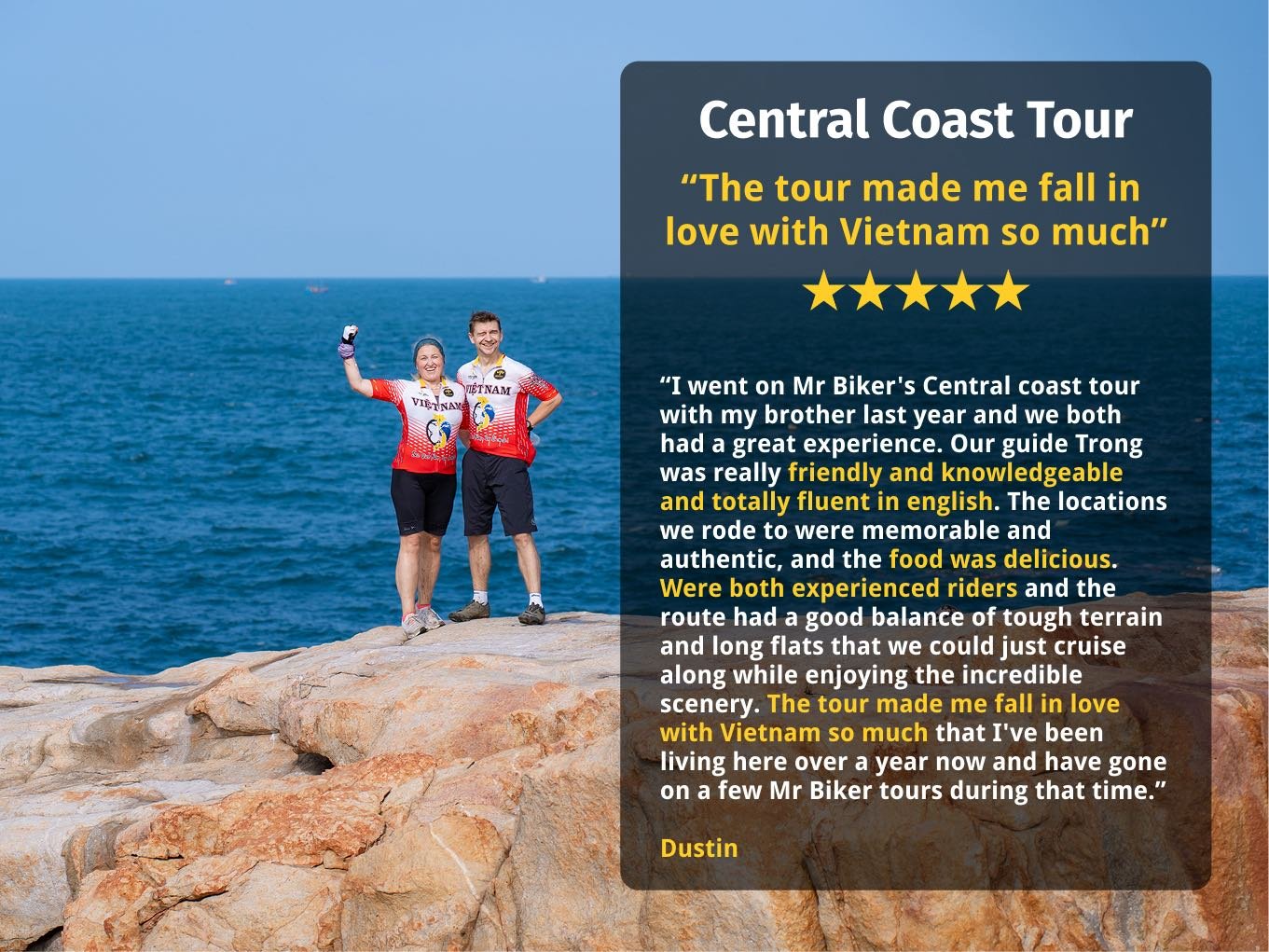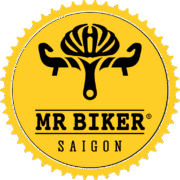Why Vietnam is Perfect for Cycling
Unbeatable Value for Money
Vietnam offers exceptional value with accommodation starting at $10-15/night, meals for $2-5, and bike rentals from $5-15/day. Support vehicles, guides, and even custom cycling tours cost significantly less than comparable experiences in Europe or North America.
Diverse Terrain for Every Skill Level
From the dramatic mountain passes of Ha Giang Loop (reaching 2,000+ meters) to the flat, meandering Mekong Delta waterways, Vietnam’s geography caters to all fitness levels. Coastal Highway 1 offers moderate challenges, while the Ho Chi Minh Trail provides adventurous off-road options.
Rich Cultural Immersion
Cycling at 15-20 km/h lets you genuinely connect with local communities—something impossible from a tour bus. Stop at roadside cafes, interact with ethnic minorities in northern highlands, witness rice harvesting techniques, and explore ancient towns like Hoi An at your own pace.
Exceptional Infrastructure Development
Vietnam has invested heavily in road infrastructure over the past decade. Major routes feature well-maintained surfaces, while emerging cycling tourism has created better support services, bike-friendly accommodations, and repair shops in key destinations.
Year-Round Riding Opportunities
Vietnam’s north-south geography means some region is always ideal for cycling. When the north faces winter cold, the south enjoys perfect conditions, and vice versa during summer months.
Top Cycling Routes by Region
Northern Vietnam
Ha Giang Loop (350-450km, 4-6 days) The crown jewel of Vietnamese cycling, this route circles the northernmost province bordering China. Expect dramatic karst landscapes, Ma Pi Leng Pass (named one of the world’s most spectacular roads), and interactions with Hmong, Tay, and Dao ethnic communities. Challenging climbs reward riders with breathtaking panoramas. Best for experienced cyclists with good fitness.
Cycling Ha Giang Loop (click here)
Mai Chau Valley Loop (150km, 2-3 days) Perfect for intermediate riders, this route from Hanoi features stunning rice terraces, Thai ethnic villages, and manageable mountain passes. The valley floor offers flat riding between villages, with opportunities for homestays that provide authentic cultural experiences.
https://mrbikersaigon.com/ha-giang-cycling/
Cycling Mai Chau to Pu Luong (click here)
Ba Be National Park Circuit (100km, 2 days) Combining cycling with Vietnam’s largest natural lake, this route winds through pristine jungle, waterfalls, and limestone caves. Moderate difficulty with rewarding scenery and excellent wildlife spotting opportunities.
Central Vietnam
Hai Van Pass Coastal Route (Hue to Hoi An, 150km, 2-3 days) Perhaps Vietnam’s most iconic cycling route, Hai Van Pass climbs to 496 meters with spectacular coastal views. The descent into Da Nang and ride to Hoi An offers beach stops and cultural landmarks. Manageable for moderate fitness levels with one challenging climb.
Ho Chi Minh Trail – Central Highlands Section (Variable distances) For adventure cyclists, sections of the historic Ho Chi Minh Trail through Kon Tum and Gia Lai provinces offer remote, challenging terrain with waterfalls, ethnic villages, and historical sites. Requires self-sufficiency and good mechanical skills.
Phong Nha-Ke Bang Loop (200km, 3-4 days) Cycle through UNESCO World Heritage karst landscapes, visit the world’s largest caves (Son Doong area), and explore rural countryside. Mix of flat riverside paths and moderate hills.
Ultimate Saigon to Hoi An Cycling Adventure: 10 Days Tour (click here)
Southern Vietnam
Mekong Delta to Cambodia Flat, easy riding perfect for beginners or families. Navigate between floating markets, fruit orchards, and canal-side villages. Combine cycling with boat trips through the intricate waterway network. Can Tho, Ben Tre, and Vinh Long make excellent bases.
Cycling Indochina: Vietnam to Cambodia Adventure (click here)
Best Time of Year to Cycle
Northern Vietnam (Hanoi, Ha Giang, Sapa)
- Optimal: September to November, March to May
- Temperature: 15-28°C
- Conditions: Clear skies, minimal rain, excellent visibility
- Avoid: December – February (cold, occasional frost in mountains), June-August (hot, humid, heavy rain)
Central Vietnam (Hue, Hoi An, Da Nang)
- Optimal: February to May
- Temperature: 20 – 30°C
- Conditions: Dry season, calm seas, perfect for coastal routes
- Avoid: September – December (typhoon season, heavy rainfall)
Southern Vietnam (Mekong Delta, Ho Chi Minh City)
- Optimal: November to March
- Temperature: 25-32°C
- Conditions: Dry season, comfortable humidity levels
- Avoid: May – October (monsoon season, though still rideable with proper gear)
Pro Tip: If cycling multiple regions, travel south to north from November to March, or north to south from March to May to optimize weather conditions.
Practical Tips for Riders
Bike Options and Rentals
- Quality mountain bikes and touring bikes available in major cities ($10-20/day)
- Hanoi, Da Nang, and Ho Chi Minh City offer best selection and maintenance
- Consider shipping your own bike for extended tours (approximately $200-300 international)
- E-bikes are increasingly available in tourist areas ($15-25/day)
Safety Considerations
- Vietnamese traffic is chaotic but predictable—maintain steady speed and clear signals
- Wear bright colors and use front/rear lights, even during daytime
- Helmets mandatory; bring your own for proper fit
- Download offline maps (Maps.me, OsmAnd) as cellular coverage can be spotty
- Carry basic first aid kit and know location of nearest clinics
Essential Gear
- Padded cycling shorts for long days
- Lightweight rain jacket (essential year-round)
- Sun protection: arm sleeves, neck gaiter, quality sunscreen
- Hydration system (3L capacity minimum for mountain routes)
- Basic tool kit: multi-tool, spare tubes, pump, chain links
Navigation and Communication
- Vietnamese SIM cards cost $5-10 with generous data
- GPS devices helpful for remote areas
- Learn basic Vietnamese phrases or download translation apps
- Join Vietnam cycling Facebook groups for real-time route advice
Health Precautions
- Consult travel doctor for recommended vaccinations
- Bring altitude sickness medication for northern mountain routes
- Pack electrolyte supplements for hydration
- Travel insurance with cycling coverage is essential (check exclusions)
Plan Your Cycling Trip With Mr Biker Saigon
Ready to Experience Vietnam by Bike?
Transform your cycling dreams into reality with Mr Biker Saigon – Vietnam’s trusted cycling adventure specialists. Whether you’re conquering mountain passes, cruising coastal highways, or exploring rural villages, we’ll make your two-wheeled journey unforgettable.
Why Choose Mr Biker Saigon:
- Local Expertise – Born and raised in Vietnam, we know every curve, climb, and hidden gem
- Professional-Grade Equipment – Meticulously maintained bikes and full support vehicles
- Flexible Itineraries – Customized routes matching your fitness level and interests
- Authentic Experiences – Direct connections with local communities and homestays
- Safety First – Experienced guides, comprehensive insurance, and 24/7 support
Get Started Today:
📞 Call/WhatsApp: +84 34 941 7856
📧 Email: tours@mrbikersaigon.com
🌐 Website: mrbikersaigon.com
Free Consultation Available – Not sure which route suits you? Schedule a 30-minute call with our cycling specialists to design your perfect Vietnamese adventure.
Join 2,000+ Happy Cyclists – Check out our reviews on TripAdvisor and Google to see why riders from 45+ countries trust Mr Biker Saigon for their Vietnam cycling adventures.
FAQ Section
Do I need to be an experienced cyclist to ride in Vietnam? No. Vietnam offers routes for all skill levels. The Mekong Delta and coastal areas provide flat, easy terrain perfect for beginners, while Ha Giang Loop and Central Highlands challenge experienced riders. Most guided tours clearly indicate difficulty levels and daily distance/elevation ranges.
Is it safe to cycle on Vietnamese roads? Yes, with proper precautions. While traffic appears chaotic, it follows predictable patterns. Vietnamese drivers expect bicycles on roads and typically provide space. Avoid cycling at night, wear visible clothing, and consider guided tours for first-time visitors. Thousands of international cyclists complete Vietnam tours safely each year.
Can I rent quality cycling equipment in Vietnam? Major cities (Hanoi, Da Nang, Ho Chi Minh City) offer good quality mountain bikes, touring bikes, and increasingly, e-bikes. Remote areas have limited options. Serious cyclists often bring their own bikes or rent from specialized tour operators who maintain professional-grade equipment. Always test ride and check brakes, gears, and tires before departing.
What’s the average daily cycling distance? Varies by route and fitness level. Guided tours typically cover 50-80km daily, with 4-6 hours riding time. Independent cyclists may ride 60-100km depending on terrain. Flexible itineraries allow shorter days for sightseeing or longer days to reach specific destinations.
Do I need a support vehicle? Not essential but highly recommended for multi-day tours, especially in remote areas. Support vehicles carry luggage, provide mechanical assistance, offer rest stops with refreshments, and transport riders past dangerous or uninteresting road sections. Budget independent cyclists successfully complete routes without support using panniers.
What about language barriers? English is widely spoken in tourist areas and by professional cycling guides. In remote regions, language barriers exist but locals are exceptionally welcoming and helpful. Translation apps, pointing at maps, and basic Vietnamese phrases resolve most situations. Many cyclists report language barriers add to the adventure rather than create problems.
How much should I budget for a cycling trip in Vietnam? Independent budget cycling: $25-40/day (basic guesthouses, street food, bike rental). Mid-range independent: $50-80/day (comfortable hotels, restaurants, occasional taxis). Budget guided tours: $50-80/day (group tours, basic support). Premium guided tours: $150-250/day (small groups, luxury accommodations, full support). International flights and personal gear are additional.
What vaccines or health precautions are needed? Consult your travel doctor 6-8 weeks before departure. Typically recommended: Hepatitis A & B, Typhoid, Tetanus, and Japanese Encephalitis for rural areas. Malaria risk is low in most cycling regions but present in remote Central Highlands. Comprehensive travel insurance with cycling coverage is essential. Bring personal medications as specific brands may be unavailable.

